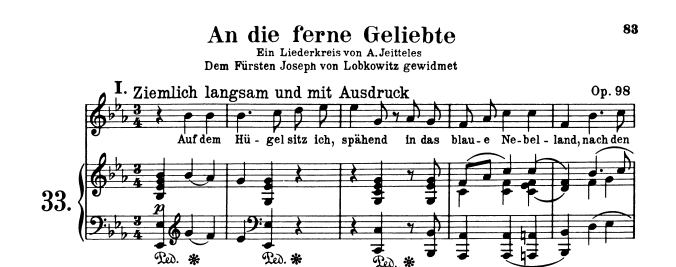MEI, the “Music Encoding Initiative”, represents a music markup language, an organization, and a research community. Initially conceived by Perry Roland from the University of Virginia Library in response to the need for a “comprehensive markup language in the academic music community,” MEI grew into an international effort when Stefan Morent of the University of Tübingen and Johannes Kepper and Daniel Daniel Röwenstrunk, both from Edirom joined the effort. The National Endowment for the Humanities and the German Research Foundation (DFG) provided funding, bringing together musicologists, librarians, technologists, and music theorists to create an international standard for music encoding. The first international MEI conference was held in 2013 at the Mainz Academy for Literature and Sciences, and the second in 2014 at the University of Virginia, which I attended. The viability, flexibility, and strong technical and scholarly foundation of MEI continues to grow. Presently, the Library of Congress has designated MEI as a recommended format specification, and MEI will be used in new digital editions of Mozart, Bach, and Weber as well as others. Through Verovio, MEI will be used to render incipits in RISM, the international online catalog of musical sources.
Rendering music notation in a meaningful way can be challenging. Musical notation involves subtle (and sometimes not so subtle) differences that greatly impact meaning and interpretation. Variations in placement horizontally and vertically, color, shape, and size of notes, and spacing are all important elements to render in musical notation. To complicate matters further, notation systems other than the common western notation, such as lute tablatures, medieval neumes, renaissance polyphony, and others, necessitate flexibility in any standard music encoding system. Building MEI as a framework allows for the development of various schema to support different notation systems. Presently, MEI serves only to render musical notation, not to apply descriptive analytical tags.
Although similar in some ways to MusicXML, which is proprietary, MEI is platform independent, public, open standard, and controlled by the scholarly community. Designed to facilitate sharing and scholarly systematic inquiry and analyses of musical scores, MEI’s framework works with various notation systems, incorporates valuable metadata, and provides the foundation for the production of viable scholarly editions of music. Like TEI (Text Encoding Initiative), the MEI framework is xml and natural-language based. The framework, known as the “Music Encoding (MEI) Guidelines”, contains application guidelines, tag library, rules, and accompanying schema in an ODD (One Document Does-It-All) document.
The three pillars that support the MEI framework are elements, attributes, and the relationships between various elements and attributes. Elements identify every aspect of the musical work and are identified and defined in the tag library. The tag library also defines which attributes are associated with any particular element. Elements include structural elements, musical elements, and textual elements. Document structure, metadata, and musical structure comprise the structure elements. An MEI statement is also included in the document structure. Metadata is in the FRBR model (Functional Requirements for Bibliographic Records) as defined by IFLA (the International Federation of Library Associations and Institutions). Structural elements also include the components of the musical work, which can be a symphony, sonata, or concerto with different movements, a song cycle, an opera with arias, duets, overtures, and many others. Beyond the structural elements come the basic music notational elements including key signatures and clefs, bar lines, note, chord, rest, accidentals, and more. There are currently over 300 MEI Elements in the guidelines. Below you will see coding (from http://music-encoding.org/documentation/samples) of some structural elements and musical elements for Beethoven’s An die ferne Geliebte.
Stuctural Elements
Musical Content – Below is the coding for the first measure of An die ferne Geliebte.
Projects that utilize MEI include:
Beethovens Werkstatt – combining variants from editions, manuscripts, and sketchbooks into a completely new concept of a scholarly edition using Edirom tools and MEI.
Online Chopin Variorum Edition – online archive of manuscript and printed music that can be manipulated by the viewer to create an individualized performing edition.
Les Livres de Chansons Nouvelles de Nicolas Du Chemin – collection of mid-sixteenth century French songs from the printer Nicolas Du Chemin.
Edirom – tool for producing digital scholarly editions of music.
Freischutz Digital – completely digital critical scholarly musical edition of Carl Maria von Weber’s opera.
Marenzio Online Digital Edition – online critical edition of Luca Marenzio, 16th century madrigal composer.
Digital Mozart Edition – online scholarly edition, critical notes, and facsimile editions.
Music Notation Addressability Project – at the University of Maryland Institute for Technology in the Humanities
Transforming Musicology – project customizing lute tablature for MEI.
Verovio – developed by RISM Switzerland to render MEI for musical incipits.
– Anne Harlow aharlow@temple.edu
